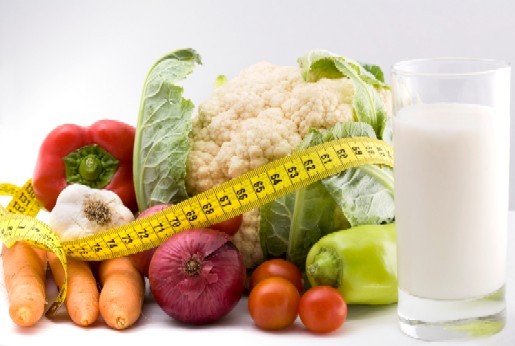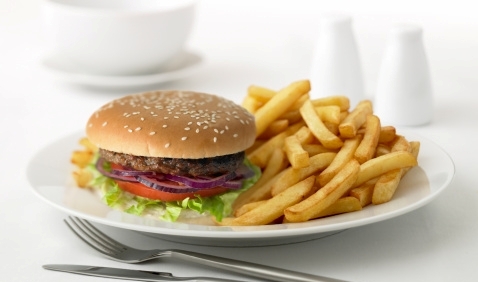Effective natural remedies, prevention, lifestyle changes and diet for diabetes
 Diabetes is a disease where there is excess sugar in the blood. But why is it there and what can you do about it?
Diabetes is a disease where there is excess sugar in the blood. But why is it there and what can you do about it?
Before we look at natural remedies for diabetes and effective tips for avoiding diabetes, let’s discuss why sugar is such a big deal – and why our body needs to be able to use it effectively.
Our cells need sugar for energy to function. When we eat, the carbohydrates in our foods are converted into glucose and rapidly absorbed into the bloodstream.
When the glucose levels in the blood rise, it signals the pancreas to make and release insulin. Insulin helps the cells to sponge up the sugar in the blood.
Without insulin, the glucose is unable to slip into the cells and it floats around in the blood. Diabetes occurs when the body can’t make enough insulin or can’t properly use the insulin it makes.
Related reading: Are you making this blood sugar control mistake?
The serious diabetes problem in America
America currently has a problem and it has to do with sugar. The prevalence of diabetes in America continues to grow. In fact, diabetes affects more Americans than cancer and HIV, and yet it receives the smallest amount of funding.
There is no cure to date, but we do know that prevention can go a long way in keeping people off medication. In particular, natural remedies for diabetes should be adopted by the American population.
Therefore, even if you have already been diagnosed with diabetes or are worried you may develop the disease, it’s important to understand diabetes inside and out. For example, you should understand the causes and symptoms of diabetes all the way to foods to avoid and even lifestyle changes. These are all vital aspects in not only understanding diabetes, but in moving toward reducing the number of diabetes cases in the American population.
U.S. diabetes stats and facts
A 2014 report published in the National Diabetes Statistics Report estimated that the number of diagnosed and undiagnosed diabetes cases in the U.S. was at 29.1 million – or 9.3 percent of the population. An alarming 27.8 percent of those fall into the undiagnosed category, either from lack of resources or an inability to obtain such resources.
The population group with the highest prevalence of diabetes was (and is) seniors – 11.8 million seniors have diabetes with or without the formal diagnosis, according to the study.
Also included in the study was the cost of diabetes on the U.S. health care system, reported as $245 billion – this reflects the cost of diagnosed cases of diabetes. Essentially those with diabetes spend 2.3 times more on health care than those who do not have diabetes.
Understanding type 1 and type 2 diabetes
There are two types of diabetes, but both share one common thread: Diabetes is an illness involving how the body processes and uses glucose – or sugar. Glucose is essential to our everyday lives because it provides us with energy that goes into the cells to make up our muscles and tissues. Your brain, in particular, requires glucose so it can function properly as well.
Diabetes, as we’ve mentioned, is the presence of too much glucose, no matter which type of diabetes you have. This excess sugar can be harmful to our health over the long-term.
There are two types of diabetes: type 1 and type 2. Type 1 diabetes is often referred to as juvenile diabetes because it usually develops when you are young. In this form of diabetes, the body either doesn’t produce enough or stops producing insulin altogether due to the immune system.
Type 2 diabetes is more commonly found in adults and develops over time. This form of diabetes is most commonly found in those who are overweight or obese. The body becomes resistant to insulin when the fat, muscles and liver stop using the insulin to carry glucose to the rest of the body. The body will then attempt to produce more insulin and the pancreas will start to overproduce it as well.
But your pancreas can only do this for so long. After a while, when your blood sugar levels rise – usually after a meal – your pancreas will not be able to keep up with the demand of insulin, and treatment is required to start managing the diabetes.
Causes and symptoms of diabetes
Causes of type 1 and type 2 diabetes vary. Type 1 diabetes, although not fully understood, is caused by the body’s immune system attacking its own insulin-making cells. This leaves the body with very low glucose. Genetics and environmental factors may also come into play when discussing the cause of type 1 diabetes.
Type 2 diabetes has also been linked to genetic and environmental factors. It’s also characterized by insulin resistance, but from a different cause. The cells in the body become resistant to insulin and therefore the sugar builds up in the blood. Another tightly linked cause of type 2 diabetes is being overweight, but there are people with type 2 diabetes who are not overweight.
Symptoms of diabetes include:
- Impaired vision: Sugar in the blood can cause the eyes to change the shape of their lenses, therefore leading to impaired vision. This is reversible once diabetes is under control.
Wounds healing slower: Blood vessels become damaged due to the increase of sugar in the blood, causing wounds to heal slower. - Fatigue: Getting up to use the bathroom numerous times throughout the night can lead to fatigue. Sugar crashes can also lead to fatigue.
- Irritability: Lack of sleep can lead to irritability
Increase in infections: Too much sugar in the blood causes damage to the blood vessels, leading to longer healing times for infections. - Weight loss: The body thinks it is starving because the cells cannot receive the necessary energy they require. Therefore, protein and muscle start to get used up by the body as energy, which contributes to weight loss.
- Hunger: Because sugar is always rising and crashing, your body sends a signal of hunger to replenish low blood sugar.
- Frequent urination: The kidneys try to release the extra glucose, so an increase in urination occurs.
- Increase in thirst: The body is trying to replace lost fluid.
- Ketones in urine
If you find that you are experiencing any of these symptoms, it’s best you do not hesitate to get them checked out. Furthermore, examine your diet and your family history to see if you are at a higher risk for developing diabetes.
Related reading: Home test to check if you have diabetes
Prevention and natural remedies for diabetes
Although prescription medications can help manage diabetes, there are many natural remedies for diabetes as well. Some natural remedies for diabetes include okra, fenugreek green tea, bitter melon and ginger, as follows:
Okra: Often found in Mediterranean, Caribbean and Indian cuisine, okra can help reduce glucose levels. This is largely in part due to its fiber content, and it can help lower the rate in which sugar is absorbed.
Fenugreek: Fenugreek can help support the lowering of glucose as well as help reduce post-meal sugar spikes.
Bitter melon: A 2011 study published in the Journal of Ethnopharmacology revealed that participants who consumed 2,000 mg of bitter melon a day reduced their blood sugar levels.
Ginger: Studies have revealed the use of ginger may control glucose levels over time, making it one of the foods good for diabetes.
It’s not only useful to use natural remedies for diabetes, but prevention is also key. If you do not currently have a diagnosis of diabetes and wish to avoid it, here are some preventative measures for diabetes.
Simple steps from Harvard School of Health include weight management, exercise, eating well, quitting smoking and lowering your alcohol intake as effective means of preventing diabetes. These aspects are effective tips for avoiding diabetes and generally living a healthier life.
Lifestyle changes for diabetes
As we’ve said, effective tips for avoiding diabetes include food, exercise and blood sugar management. Let’s further explore these lifestyle changes for diabetes so you can make a plan for change.
Role of food and diet in treating and preventing diabetes
 Because type 2 diabetes has been linked with food, it’s important to understand how food plays a role in the treatment and prevention of diabetes. Further, it’s important to know the foods good for diabetes as well as the foods to avoid for diabetes.
Because type 2 diabetes has been linked with food, it’s important to understand how food plays a role in the treatment and prevention of diabetes. Further, it’s important to know the foods good for diabetes as well as the foods to avoid for diabetes.
Foods good for diabetes
When it comes to foods that are good for diabetes, and can also be natural remedies for diabetes, try enjoying the following in your diet:
- Apples
- Asparagus
- Avocados
- Beans
- Blueberries
- Broccoli
- Carrots
- Cranberries
- Fish
- Flaxseed
- Garlic
- Kale
- Melon
- Nuts
- Oatmeal
- Quinoa
- Raspberries
- Red Grapefruit
- Red onions
- Red peppers
- Soy
- Spinach
- Tea
- Tomatoes
- Yogurt
Related reading: Glycemic index (GI) and glycemic load (GL) food chart understanding key to preventing diabetes
Recipes with foods good for diabetes
If you’re looking to incorporate the foods good for diabetes within your diet, here is a recipe you can try, to get them into your diet.
The easiest recipe to enjoy many of these foods good for diabetes is a diabetes-friendly salad. With kale and spinach as your greens, you can add in red peppers, red onions, tomatoes and carrots with a light oil and vinegar dressing. On the side, put together a fruit salad with blueberries, raspberries and cranberries. Better yet, you can blend these fruits together with some yogurt to create an ideal morning shake. Lastly, ensure you sprinkle flaxseed on all your meals for that added health benefit.
The foods good for diabetes are easy to enjoy every day and can be eaten many different ways, whether on their own or together!
Foods to avoid for diabetes
On the other hand, to prevent diabetes, there are some foods to avoid. They include:
- Sugary sweets
- Fruit juices
- Raisins
- Pancakes and syrup
- Fried and greasy foods like french fries
- White breads
- Whole milk
- Pastries and cakes – especially packaged ones
- Pretzels or other high sodium products
As you can see, when it comes to foods to avoid for diabetes, the theme here is to avoid high sugar or artificial sugar items as well as processed and packaged goods. These items can lead to weight gain, which is closely linked to type 2 diabetes.
Exercise tips for people with diabetes
 Exercise is important for an overall healthy life, but even more so if you have diabetes or are on the right track for prevention. Some of the most effective exercises for diabetic patients – or those wishing to avoid diabetes – are:
Exercise is important for an overall healthy life, but even more so if you have diabetes or are on the right track for prevention. Some of the most effective exercises for diabetic patients – or those wishing to avoid diabetes – are:
- Walking: Should be completed at least three times a week at a brisk pace.
- Tai chi: This Chinese exercise is great for building strength and gently increasing movement.
- Weight training: Muscles can help regulate blood sugar. Working out major muscle groups is ideal and 10 to 15 repetitions is recommended.
- Yoga: Similar to tai chi, yoga is a gentle way of moving and can also reduce stress, which it important in managing diabetes.
- Swimming: Swimming is soft on joints and highly recommended for seniors. Because diabetics are more prone to injury, swimming offers a safe alternative to avoid injury.
Related reading: Simple steps for preventing type 2 diabetes naturally
Managing diabetes effectively
 In order to manage diabetes effectively, committing to lifestyle changes for diabetes is necessary. These lifestyle changes involve enjoying foods good for diabetes, partaking in exercises for diabetic patients and utilizing some natural remedies for diabetes.
In order to manage diabetes effectively, committing to lifestyle changes for diabetes is necessary. These lifestyle changes involve enjoying foods good for diabetes, partaking in exercises for diabetic patients and utilizing some natural remedies for diabetes.
Healthy eating is an effective tip for avoiding diabetes as well as managing it. Enjoying fruits and vegetables, instead of high sugared processed foods, is essential to manage diabetes effectively. Portion sizes are also important and should be considered as a means of maintaining a healthy weight and, therefore, managing your diabetes.
As long as you have the okay from your doctor, exercises for diabetic patients should also be performed at least three times a week or up to 150 minutes weekly. Choose exercises most appropriate for you, and make sure they are something you will enjoy, so that you’ll stick with it.
Even if you are on medications, ensure you are following the medication schedule set out by the doctor and that you’re checking your blood sugar regularly. These simple lifestyle changes for diabetes will ensure you’re managing diabetes effectively and that you don’t run into complications.
Living with diabetes
Now that you are aware of all you need to know about diabetes, from natural remedies for diabetes to foods that are good for diabetes and exercise for diabetic patients, you can now live your life managing your diabetes effectively. You won’t have to worry as much about spikes in blood sugar or, worse yet, crashes.
And even if you don’t have diabetes, you now have effective tips for avoiding diabetes, so you can continue to live a healthy life.
You’re at risk of diabetes if you have these symptoms
Diabetes affects roughly 29.1 million Americans, and with such a high prevalence most people think they know just about everything in regards to the disease. For example, you probably know diabetes is a condition that affects blood sugar. Continue reading…
-
Liquidate Unwanted Weight
The average person gains seven to ten pounds between Thanksgiving a
-
How To Make Your Thighs Bigger
Your legs are made up of three groups of muscles; the frontal thigh mu
-
British Celebs Stay Slim By Avoiding Alcohol
Drinking leads to poor health and fatThe Independent reported th
-
Vegetarian Weight Loss Program
Whats inside an effective vegetarian wei
-
Avoiding Weekend Weight Gain
Weekend outings and revelry can be very drastic for your body, all the
-
The New Fragrance Claiming to Make You Thin
Imagine the fresh, aquatic, scent of musk, vanilla, mandarin, g
- DON'T MISS
- Lose Weight with These 4 Best Carbs
- Cryolipolysis Procedure – The Process of Freezing Fat
- How Appetite Control Can Help You Lose Weight
- Healthy Weight
- How to Keep off the Weight
- Good vs. Bad: Low Fat Diets
- How to Lose 5 Pounds Fast
- Natural Metabolism Booster
- 25 Tips For Restaurant Dieting
- How To Choose The Right Pills From The Top Selling Weight Loss Pills




